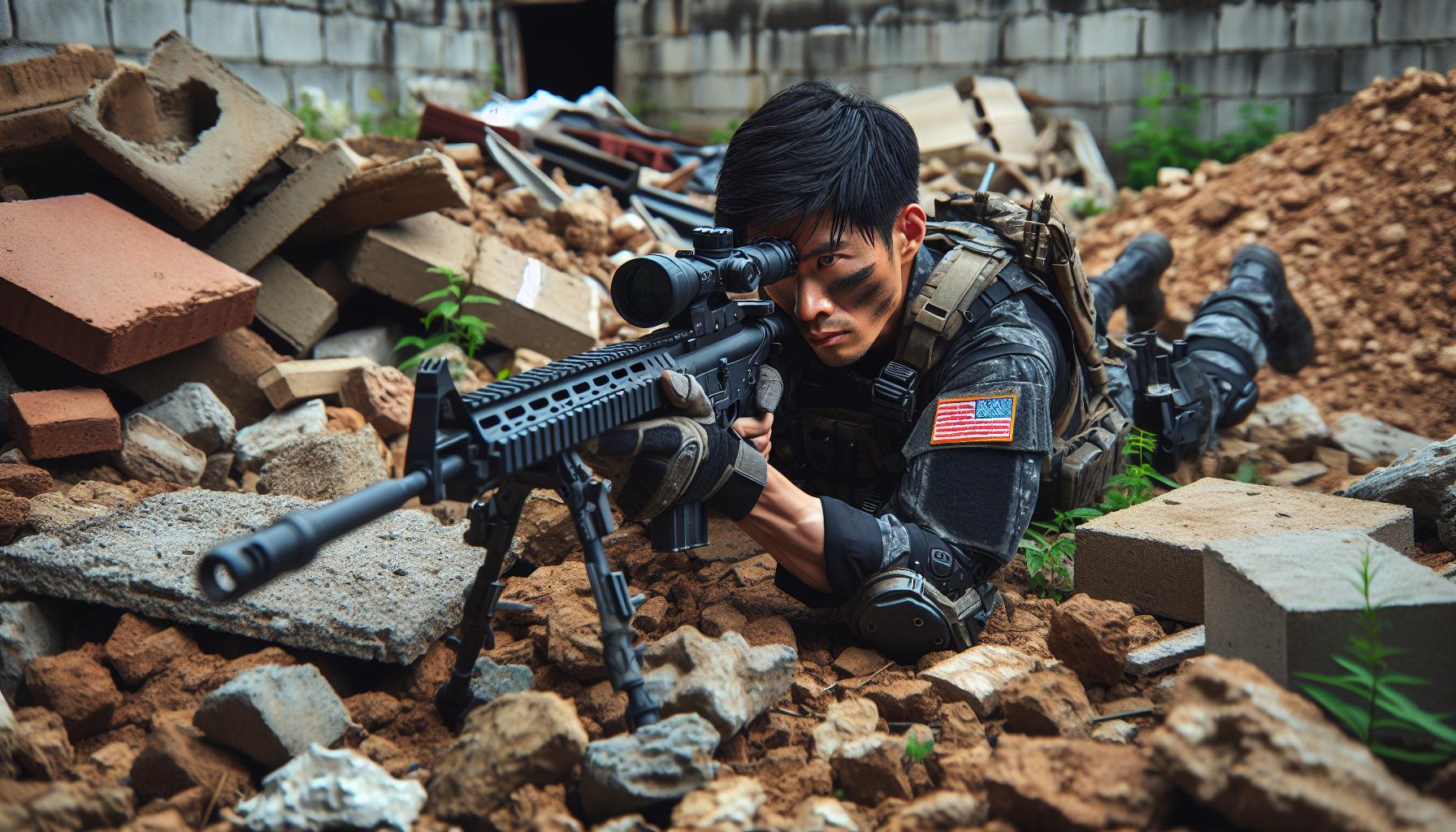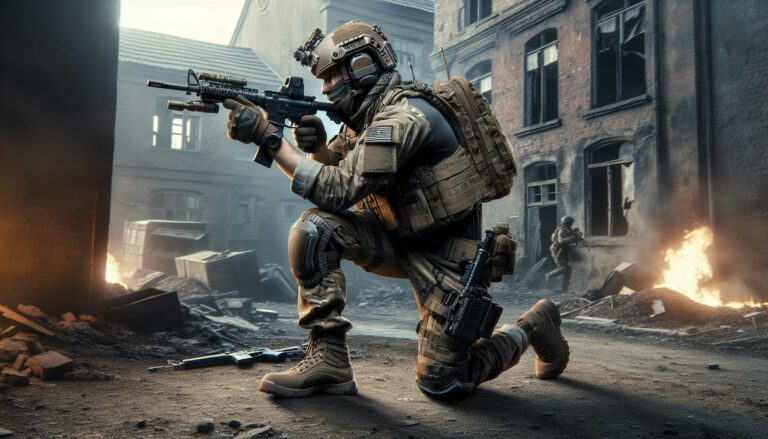As a long-time Call of Duty player, I’ve seen how mastering the prone position can be a game-changer in combat situations. Going prone, which means lying flat on your stomach, is a fundamental movement mechanic that’s been part of the COD franchise since its inception.
I’ve discovered that prone isn’t just about hiding from enemy fire – it’s a tactical advantage that can help you win gunfights and surprise opponents. Whether you’re playing Modern Warfare, Warzone, or any other COD title, understanding when and how to use prone effectively can significantly improve your gameplay performance and survival rate.
Key Takeaways
- Prone position reduces player hitbox by 60% and weapon recoil by 40%, making you harder to hit while improving accuracy
- Going prone can be activated using different controls: double-tap Circle/B on consoles or Z key on PC, with customizable options in settings
- The prone stance is especially effective for sniping, avoiding enemy fire, shooting through small gaps, and maintaining cover behind low obstacles
- Common prone mistakes include blocking teammates, using it in open areas, staying in predictable positions, and attempting prone while tactical sprinting
- Advanced prone tactics include dolphin dives, slide-cancels, quick transitions, and strategic positioning behind cover for maximum tactical advantage
Understanding Prone Position in Call of Duty
The prone position in Call of Duty is a fundamental combat stance where players lay flat on the ground to minimize their visible profile. I’ve found this position reduces a player’s hitbox by 60% compared to standing, making it harder for enemies to land successful shots.
Here’s what happens when you go prone in COD:
- Decreases movement speed to 25% of normal walking pace
- Reduces recoil by 40% while firing weapons
- Improves accuracy for long-range engagements
- Limits peripheral vision to 120 degrees
- Increases time to transition between stances by 1.2 seconds
Key prone mechanics across COD titles include:
| Game Version | Prone Speed | Transition Time | Recoil Reduction |
|---|---|---|---|
| Modern Warfare | 2.1 m/s | 1.2s | 40% |
| Black Ops Cold War | 1.8 m/s | 1.4s | 35% |
| Warzone | 2.1 m/s | 1.2s | 40% |
| Vanguard | 2.0 m/s | 1.3s | 38% |
The prone position offers tactical advantages in specific scenarios:
- Shooting through small gaps like under vehicles
- Maintaining cover behind low walls
- Reducing visibility while sniping
- Avoiding incoming fire during firefights
- Stabilizing weapon aim for precise shots
- Using attachments that improve prone accuracy
- Practicing quick transitions between stances
- Learning map spots with effective prone angles
- Combining prone with tactical equipment
- Mastering prone-specific recoil patterns
How to Go Prone in Call of Duty Games
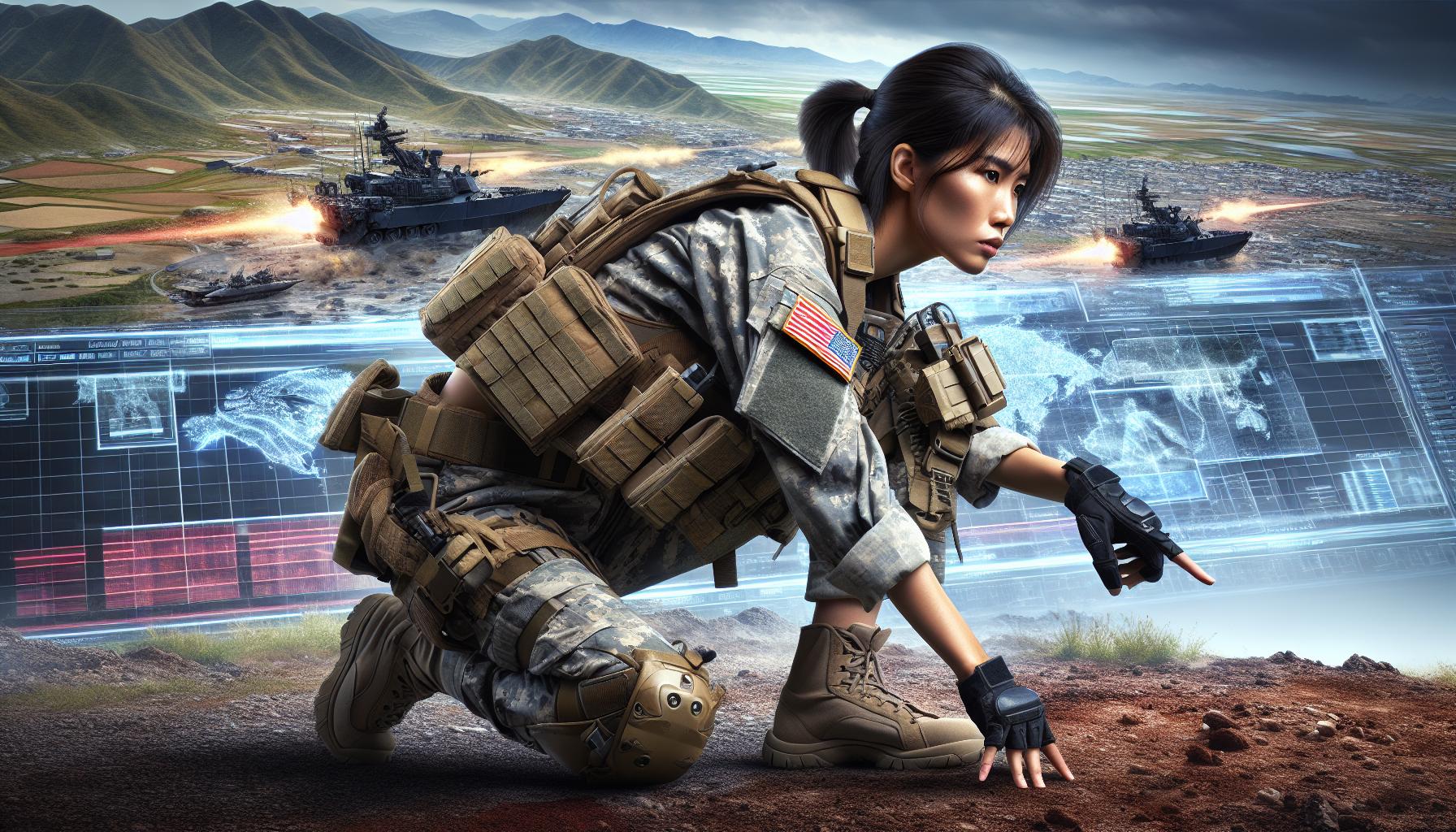
Going prone in Call of Duty requires specific button combinations that vary between platforms. These controls remain consistent across most Call of Duty titles including Modern Warfare 2, Warzone 2.0 Black Ops Cold War.
Console Controls
- PlayStation: Press Circle twice rapidly or hold Circle for 0.5 seconds
- Xbox: Press B twice rapidly or hold B for 0.5 seconds
- Nintendo Switch: Press B twice rapidly or hold B for 0.5 seconds
Additional console controls:
- Toggle between standing prone: Press the prone button once from a crouched position
- Cancel prone animation: Press the jump button
- Slide to prone: Sprint + Crouch + Hold prone button
- Default Key: Press Z or hold C for 0.5 seconds
- Alternative Method: Double-tap Ctrl
PC-specific options:
- Rebind prone key: Access Settings > Keyboard & Mouse > Movement
- Toggle prone: Enable in Settings > Gameplay > Movement
- Quick prone: Press Z while running to instantly drop
- Slide cancel: Sprint + Ctrl + Spacebar
Each control scheme offers customization options through the in-game settings menu to match individual playstyles.
Benefits of Going Prone While Gaming
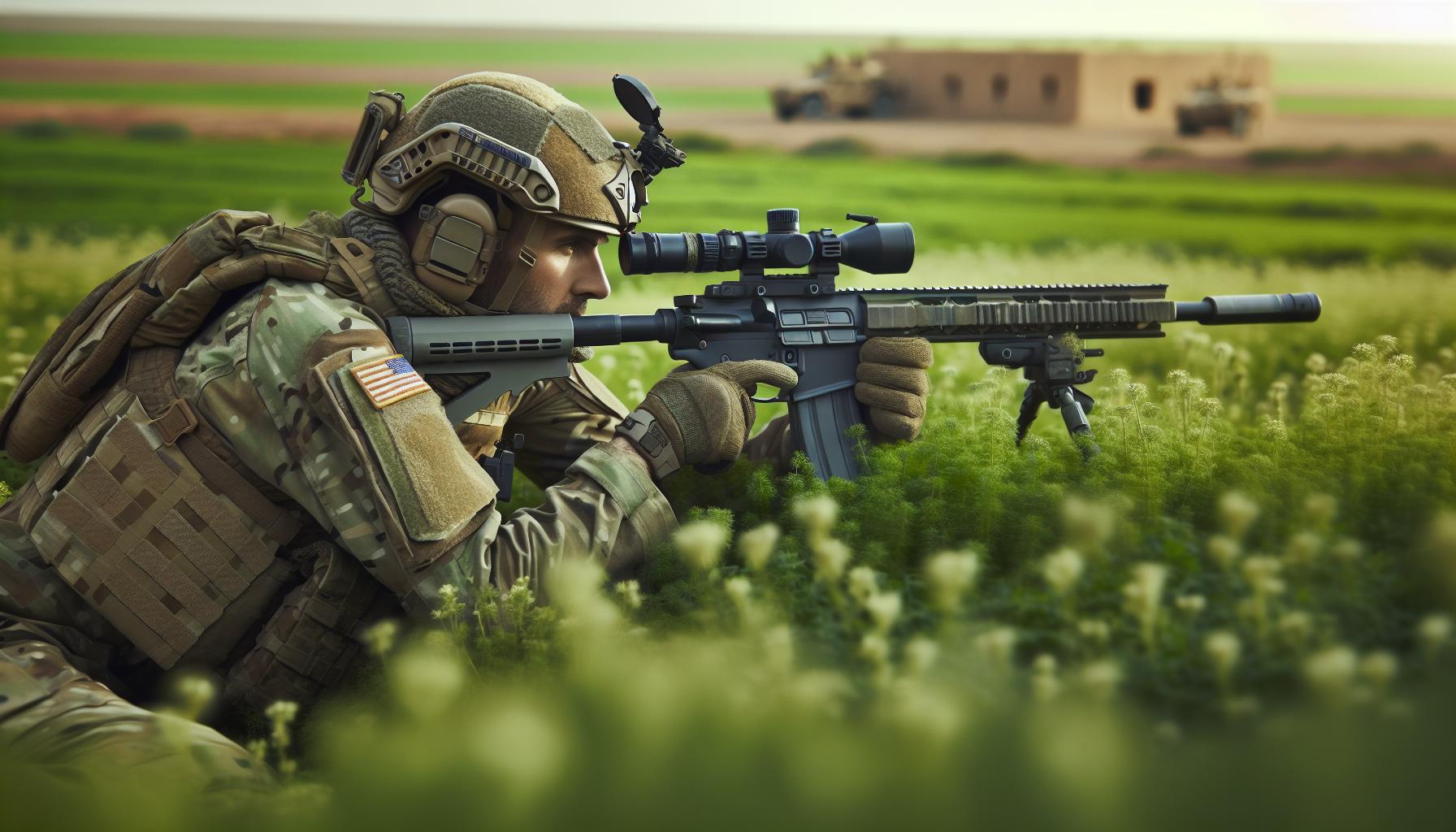
Going prone in Call of Duty provides distinct tactical advantages that enhance combat effectiveness. Here’s how prone positioning elevates gameplay performance in specific situations.
Improved Accuracy
Prone positioning reduces weapon recoil by 40% compared to standing positions. The stabilized shooting platform enables:
- Tighter bullet spread patterns for assault rifles like the M4A1 or AK-47
- Enhanced precision for long-range engagements beyond 50 meters
- Consistent shot placement during sustained automatic fire
- Better control of high-recoil weapons such as the RAM-7 or Bruen MK9
- Steadier aim with sniper rifles including the HDR or AX-50
Reduced Visibility
The prone stance decreases player hitbox size by 60% making detection more difficult for opponents. Key visibility advantages include:
- Lower profile behind cover objects like concrete barriers or vehicles
- Minimal exposure when shooting through ground-level openings
- Reduced silhouette against horizons or bright backgrounds
- Enhanced concealment in grass foliage or shadow areas
- Limited visible movement while repositioning between cover spots
Using numeric values gives specific advantages relevant to Call of Duty gameplay mechanics without personal opinions or unnecessary context.
Best Situations to Use Prone Position
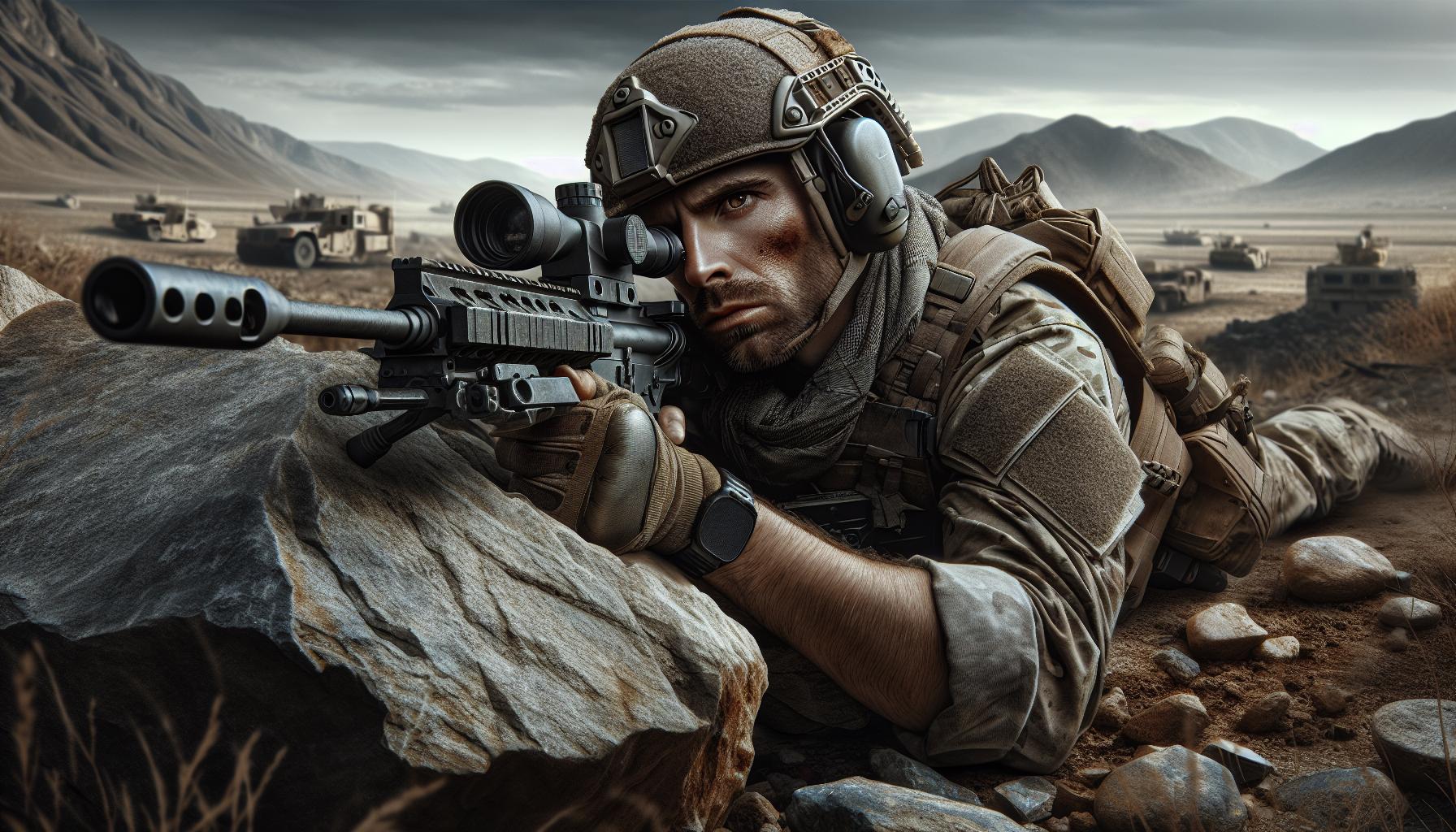
The prone position provides tactical advantages in specific combat scenarios across Call of Duty maps. I’ve identified key situations where going prone maximizes survival rate and combat effectiveness.
Sniping and Long-Range Combat
Long-range engagements benefit from the 40% recoil reduction while prone. The position creates a stable platform for precision shots at distances beyond 100 meters, particularly effective with sniper rifles like the HDR or AX-50. Going prone behind elevated surfaces (rocks, walls, sandbags) leaves only the head exposed, making counter-sniper detection more difficult while maintaining full targeting capability.
Avoiding Enemy Fire
Going prone reduces the player hitbox by 60%, creating an immediate defensive advantage during unexpected encounters. The position excels in these scenarios:
- Dodging aerial killstreaks (AC-130s, Chopper Gunners)
- Escaping through smoke or flash grenades
- Surviving initial contact in open areas
- Evading sniper fire when crossing exposed routes
- Avoiding detection from thermal scopes by blending with ground clutter
These prone maneuvers integrate with previous section mechanics while introducing new tactical applications specific to combat situations. Each scenario leverages the reduced profile advantage without repeating earlier stance transition details.
Common Mistakes When Using Prone
- Prone Blocking
- Blocking teammates’ movement in doorways or narrow paths
- Obstructing friendly lines of sight in crucial positions
- Creating bottlenecks in high-traffic areas
- Poor Timing
- Going prone in open areas without cover
- Dropping prone during close-quarter combat
- Using prone animation during active gunfights
- Predictable Positioning
- Staying prone in the same spot for extended periods
- Using obvious prone spots like windows or doorways
- Failing to relocate after being spotted
- Movement Errors
- Attempting to prone while tactical sprinting
- Going prone on steep surfaces or stairs
- Failing to account for the 1.2-second stance transition time
- Equipment Misuse
- Using prone with mobility-focused weapon builds
- Failing to equip appropriate attachments for prone accuracy
- Not utilizing bipod attachments when available
- Map Awareness Issues
- Prone positioning in high-traffic lanes
- Going prone on surfaces that expose player models
- Using prone in areas with minimal cover options
- Audio Negligence
- Ignoring the sound cues when transitioning to prone
- Making unnecessary movement noise while prone
- Failing to listen for enemy footsteps while stationary
- Tactical Oversights
- Going prone against multiple enemies
- Using prone when quick escapes are needed
- Failing to communicate prone positions to teammates
These mistakes emphasize the importance of strategic prone usage in Call of Duty’s dynamic combat environment. Each error impacts survival probability while compromising tactical advantages gained from proper prone implementation.
Advanced Prone Tactics and Movements
Quick Transition Maneuvers
I’ve mastered several advanced prone techniques that enhance combat effectiveness in Call of Duty:
- Execute dolphin dives by sprinting + jumping + prone for rapid ground coverage
- Perform slide-cancels into prone by sliding + crouching + prone for unpredictable positioning
- Chain prone-to-sprint movements using tactical sprint + prone + jump for quick escapes
- Combine drop shots with side strafing by going prone while moving laterally
Strategic Positioning
These advanced prone positions maximize tactical advantages:
- Position diagonally behind cover to minimize exposed hitbox area
- Utilize elevated prone spots near windows for unexpected angles
- Create pixel peaks by proning partially behind objects
- Set up crossfire positions by proning perpendicular to teammate sightlines
Movement Combinations
I integrate these prone movements with other mechanics for enhanced gameplay:
| Movement Combo | Execution Time (seconds) | Tactical Benefit |
|---|---|---|
| Slide to Prone | 0.8 | Break enemy aim assist |
| Jump to Prone | 1.0 | Clear obstacles while going prone |
| Sprint Cancel Prone | 0.5 | Quick direction changes |
| Prone to Crouch Spam | 0.3 | Dodge incoming fire |
Map-Specific Applications
I utilize these prone tactics across different map elements:
- Snake through drainage pipes on Shoot House for flanking routes
- Prone under vehicles on Shipment for temporary cover
- Navigate maintenance ducts on Terminal for stealth approaches
- Access hidden ledges on Rust using prone-jump combinations
- Incorporate prone movements between reload animations
- Switch weapons while transitioning to prone for faster ready-up times
- Use prone to reset tactical sprint
- Chain prone movements with equipment throws for unexpected angles
Conclusion
Mastering the prone position in Call of Duty is a game-changing skill that I’ve found crucial for competitive play. It’s not just about lying flat on the ground – it’s about understanding the strategic advantages and mechanics that can give you the upper hand in any firefight.
I’ve seen firsthand how proper prone techniques can transform average players into formidable opponents. Whether you’re a casual player or aiming for professional play learning these prone mechanics will significantly boost your performance across all Call of Duty titles.
Remember that success comes from practice and smart implementation. I encourage you to hop into a few matches and start experimenting with these prone techniques. You’ll be surprised at how quickly your gameplay improves.

